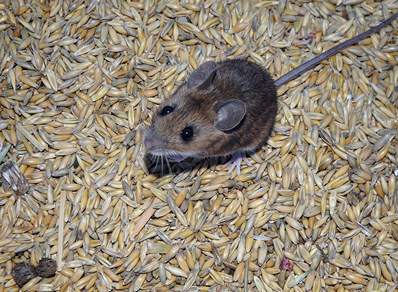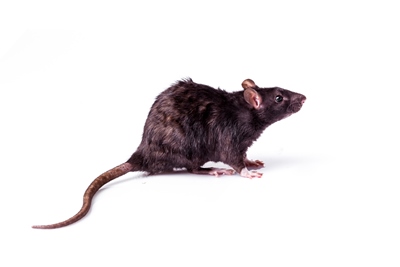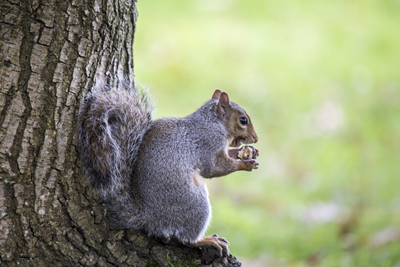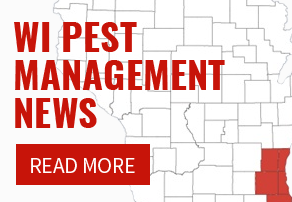The Three Rodents Most Likely to Get in Your House in This Winter
Over a long, cold Wisconsin winter, it’s not uncommon to get uninvited guests. They’ll make their presence known by scratching sounds in your walls at night, chewed through bags of rice in your pantry, and fecal droppings on your kitchen counter. Ugh!
Here are the three house crashers most likely to get into your home this winter:
 House mouse. The house mouse is the most common home intruder over the winter. Because they’re small, they can take advantage of virtually any opening in your home, even squeezing through a 1/2" hole. These mice typically move in packs and are prolific breeders, so if you see one you can be pretty sure there are more. Lots more.
House mouse. The house mouse is the most common home intruder over the winter. Because they’re small, they can take advantage of virtually any opening in your home, even squeezing through a 1/2" hole. These mice typically move in packs and are prolific breeders, so if you see one you can be pretty sure there are more. Lots more.
Description:
- 2.5” to just under 4” long
- Round body, medium gray fur with an off-white belly
- Breed rapidly (4 to 12 babies every three weeks and as many as 35 per year)
- Diet: Omnivorous, but tend to prefer fruit, seeds and grain-based foods.
- Feces: 1/8” to ¼” long, rod shaped with points on ends
 Norway rat (aka street rat or sewer rat). Most common in urban areas, like downtown Milwaukee, these rats will infest crawl spaces, basements and attics. They’ll chew through drywall, insulation, electrical wires and even lead pipes. They’re nocturnal foragers, and they will find their way into your kitchen. They like to nest in piles of wood, so keep your firewood stash well away from your house.
Norway rat (aka street rat or sewer rat). Most common in urban areas, like downtown Milwaukee, these rats will infest crawl spaces, basements and attics. They’ll chew through drywall, insulation, electrical wires and even lead pipes. They’re nocturnal foragers, and they will find their way into your kitchen. They like to nest in piles of wood, so keep your firewood stash well away from your house.
Description:
- 7 to 9.5”long
- Brown, coarse fur with black hairs throughout, gray to off-white undersides
- Blunt muzzle, tail shorter than length of head and body, small ears and eyes
- 3 to 12 litters per year, with litter sizes ranging from 4 to 22
- Diet: Virtually any food in your home. In the wild, they’ll kill and eat small birds, mammals and insects.
- Feces: About ¾” long with blunt ends
 Gray squirrel. The gray squirrel is the most common squirrel in Wisconsin. Their dens are leafy nests in trees or the cavities of old trees, but they’ll also nest in an attic. Once in your attic, they’ll tear up insulation to make nests, chew through electrical wiring, and soil everything in their path with urine and feces. Unlike mice and rats, though, they’re unlikely to venture into your kitchen.
Gray squirrel. The gray squirrel is the most common squirrel in Wisconsin. Their dens are leafy nests in trees or the cavities of old trees, but they’ll also nest in an attic. Once in your attic, they’ll tear up insulation to make nests, chew through electrical wiring, and soil everything in their path with urine and feces. Unlike mice and rats, though, they’re unlikely to venture into your kitchen.
Description:
- Gray coat, bushy tail with brown and black hairs and a white tip, white throat and belly
- 15” to 20” long, plus a 6” to 10” tail
- Two litters per year; usually 2 to 4 babies per litter, but as many as 8
- Diet: Mostly seeds, nuts, fruits and mushrooms, but will also eat insects, eggs, and even small animals and snakes.
- Feces: About 3/8” long and 8mm diameter, cylindrical shape with rounded edges, light brown to reddish brown
Why do rodents get into homes during the winter?
Reason #1: It’s cold outside! Like any other warm blooded mammal, rodents would rather be in a warm house than out in the cold.
Reason #2: They enter homes to get food or water, and your house has a far more plentiful supply than the wild and it’s much easier to get to.
How do rodents get inside houses?
Rodents enter homes through any opening in your home’s exterior. If the opening isn’t large enough for them to squeeze through, they’ll gnaw at it until it it’s large enough. Any opening larger than 1/4” should be sealed.
We recommend thoroughly checking the exterior of your home every year before winter and sealing any openings you find. If the hole cannot be fully sealed, stuffing it with copper wool will keep rodents at bay. It gets stuck in their teeth and unlike steel wool (often recommended) it won’t leave rust stains on your home’s exterior.
What kinds of problems do rodents cause in a house?
Rodents wreak all kinds of havoc in a house. They’ll shred up attic insulation to use for nests, chew through wood, drywall, plumbing pipes and electrical wires. As if this weren’t bad enough, there’s the very real potential of contracting a disease spread by these rodents, or the ticks and fleas they carry.
You don’t have to be bitten by a rodent or have contact with a dead one to get a disease from it. All you have to do is come into contact with the urine and feces they leave behind. Touching them, or inhaling any dust from their dried urine or droppings is all it takes to get a nasty case of salmonellosis or leptospirosis.
Signs of a rodent infestation
- Droppings
- Scratching noises on ceiling or behind walls
- Chewed open area and scratch marks on exterior or interior wood of house
- Packaged foods in pantry chewed into
- ½” to 2” holes in packaged cardboard products or stored boxes
What to do if you have a rodent infestation
If you’ve heard noises in the night and have found droppings anywhere in your house, you’re sharing your home with rodents. You can try setting traps, but catching one or two isn’t likely to solve the problem—and you run the very real risk of exposing yourself to toxic poisons or catching a disease through contact with rodent feces or any dead rodents you have to remove.
A-Landlords Pest Management has been providing effective and affordable rodent control in Milwaukee for over 25 years. We use proven methods to exterminate all types of rodents. If you have a rodent problem in your home or business, don't put off getting it taken care of. Contact us today to request a quote. We also offer comprehensive winter insect pest control & other winter services too.









 Bed Bug
Bed Bug Ant
Ant Roach
Roach Wasp
Wasp Spider
Spider Rodent
Rodent

